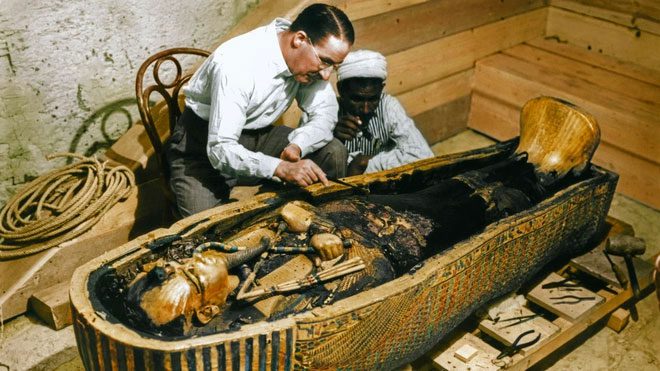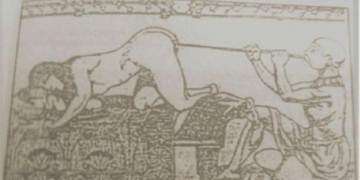One hundred years after the discovery of the 3,300-year-old tomb, a previously unpublished letter has confirmed long-standing suspicions that Howard Carter stole artifacts from the burial site.
Howard Carter, the archaeologist who discovered the tomb of Pharaoh Tutankhamun in 1922, had long been suspected by the Egyptians of stealing treasures from the tomb before it was officially announced. However, there seemed to be no evidence to prove this.
Recently, a clue has emerged in the form of a letter, previously unpublished, sent to Carter in 1934 from a distinguished British scholar in his excavation team, as reported by the Guardian on August 13.
The letter was written by Alan Gardiner, a leading Egyptologist. In it, Carter had asked Gardiner to translate hieroglyphs found in the 3,300-year-old tomb and then gave him a “amulet” intended for the dead, assuring him that it was not taken from the tomb.
Gardiner handed the amulet to Rex Engelbach, the then Director of the Egyptian Museum in Cairo, who confirmed that the amulet was made from the same mold as other amulets in the museum, and thus it was certainly taken from the tomb.
In the letter to Carter, Gardiner attached Engelbach’s confirmation, which stated: “The amulet you gave me was certainly stolen from the tomb of Tutankhamun.”
Gardiner expressed to Carter: “I am extremely regretful for being placed in such an awkward position.”
However, he added: “Of course, I did not tell Engelbach that I had the amulet from you.”

Archaeologist Howard Carter discovered the tomb of King Tutankhamun. (Photo: University of Oxford).
The letters, now part of a private collection, are set to be published in a book by Oxford University Press titled “Tutankhamun and the Tomb that Changed the World.”
The book’s author, Bob Brier, a leading Egyptologist at Long Island University, told the Observer that suspicions regarding Carter’s theft of treasures have long circulated, “but now there is no doubt.”
This year marks the 100th anniversary of Carter and his main sponsor, Lord Carnarvon, discovering the tomb of the king, filled with gold, chariots, and thousands of other valuable artifacts. In the following decade, Carter oversaw the relocation and transportation of these items down the Nile to Cairo for display in the Egyptian Museum.
Carter claimed that the treasure of the tomb was no longer intact due to looting in ancient times, but this statement did not gain widespread trust among Egyptologists.
In 1947, in a little-known scientific journal in Cairo, Alfred Lucas, one of Carter’s staff, reported that Carter had secretly broken into the burial chamber and then sealed it up.
“They were suspected of having broken into the tomb before it officially opened, taking artifacts, including jewelry, which were sold after their deaths. There were suspicions about how Carter obtained these items, and people suspected that he might have stolen them, and now these letters serve as authentic evidence,” Brier said. “He certainly would never admit to it. But he was banned from accessing the tomb by the Egyptian government for a time.”





















































